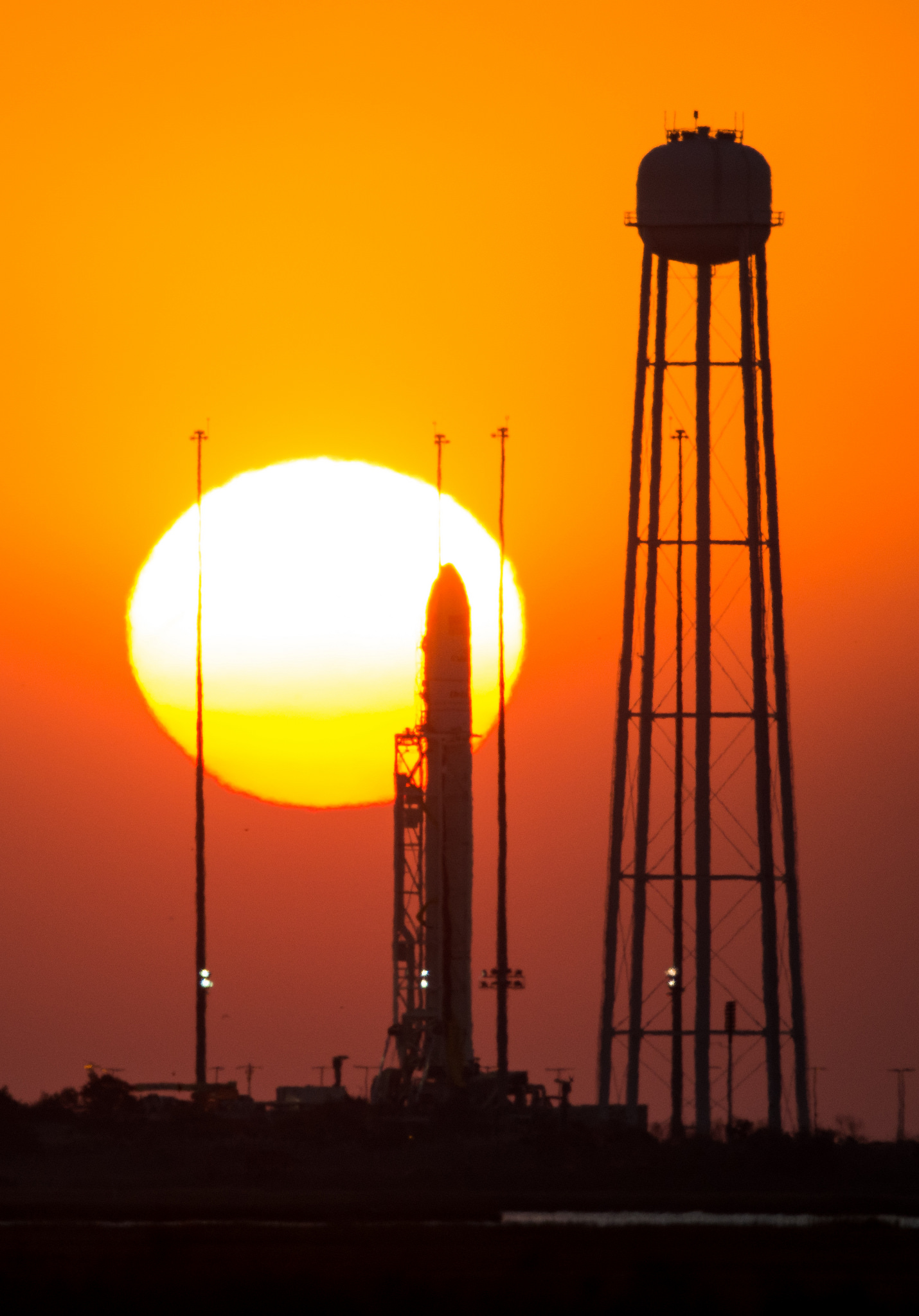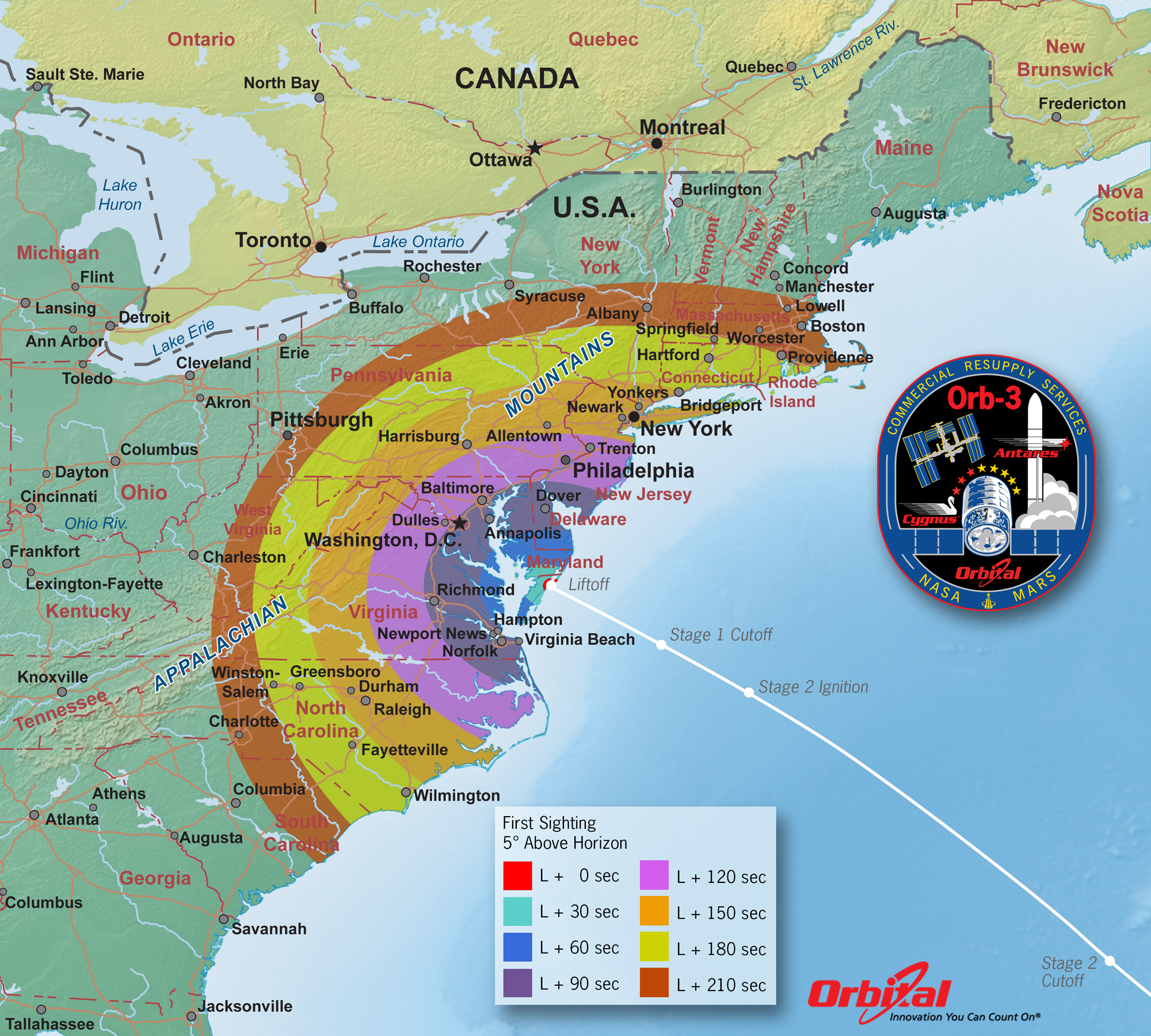Private Rocket to Launch Space Station Cargo for NASA Tonight: Watch Live

A commercial supply ship bound for the International Space Station is ready to launch from the Eastern Shore of Virginia tonight (Oct. 27), and you can watch it live. If you live on the U.S. East Coast, you might even catch a glimpse of the rocket with your own eyes.
Packed with 5,000 lbs. (2,267 kilograms) of science experiments, astronaut clothes, food, tools and replacement parts, Orbital Sciences' unmanned Cygnus capsule is scheduled to blast off atop an Antares rocket at 6:45 p.m. EDT (2245 GMT). The launch from NASA's Wallops Flight Facility will mark the start of Orbital Sciences' third of eight delivery missions to the station under a $1.9 billion contract with NASA.
You can watch the launch webcast live on Space.com, courtesy of NASA TV, beginning at 5:45 p.m. EDT (2145 GMT). Thanks to a favorable forecast, residents along the East Coast of the United States might also be treated to a view of the rocket as it arcs out over the Atlantic. [How to See the Antares Rocket Launch from the US East Coast]
A 'beautiful launch' expected
Weather officials predicted a 98 percent probability of "go" launch conditions this evening, with clear skies and light winds. Frank Culbertson, a former NASA astronaut and current executive vice president of Orbital Sciences, said he has never seen such a good weather forecast for a launch.
"I'd like to talk to that weather man more often," Culbertson told reporters in a pre-launch briefing Sunday (Oct. 26).
Gerald Esquivel, the space station's visiting vehicle Cygnus integration manager, added, "We're going to have a beautiful launch."
Observers up and down the Eastern Seaboard from Connecticut to South Carolina should have a great view of Antares lighting up the night sky, said Sarah Daugherty, NASA's test director at Wallops.
Breaking space news, the latest updates on rocket launches, skywatching events and more!
"You'll be able to see the rocket pretty much up and down the entire Eastern Seaboard there from about Connecticut to South Carolina," Daugherty said in a press conference Sunday (Oct.26). "We'll have a great view of Antares lighting up the night sky."
Skywatchers might even be in for a "double show," Daugherty said, as the space station will streak across the sky about 5 minutes after the launch.
Big science onboard
Science experiments make up about a third of the cargo the unmanned Cygnus space capsule is hauling into space. One new experiment, the Meteor Composition Determination, or Meteor, will be installed in a window on the space station, where it will conduct the first space-based observations of meteors, or shooting stars, that enter Earth's realm. Free of interference from the planet's atmosphere, the high-resolution video and images collected by Meteor will help scientists understand the chemical composition of meteors.
Cygnus will also a deliver an experiment called Drain Brain, which will use a special neck collar to determine how astronauts' blood flows from the brain down to the heart without gravity. The results could help researchers develop countermeasures for headaches and other neurological problems astronauts report in space, said Camille Alleyne, assistant ISS Program scientist.
If the launch goes as planned, Cygnus will spend about a week in orbit before it catches up to the space station. Upon the capsule's Nov. 2 arrival, NASA astronaut Reid Wiseman, with help from his crewmate Barry Wilmore, will intercept the spacecraft using the station's robotic arm.
Cygnus will remain attached to the station for about a month, giving the astronauts ample time to unpack the new cargo and re-load it with trash. After the capsule departs the lab around Dec. 3, it will spend another two weeks in orbit performing engineering tests for future missions. Then, the spacecraft will break up in Earth's atmosphere as it leaves orbit.
Since the U.S. space shuttle fleet retired in 2011, NASA has relied on foreign space agencies and private companies to keep the space station fully stocked and crewed. Orbital Sciences isn't the only company with a commercial contract to resupply the station; SpaceX also has an agreement with NASA to fly 12 unmanned missions to the orbiting outpost with its Dragon capsule. SpaceX's fourth official resupply mission ended Saturday (Oct. 25) as Dragon splashed down in the Pacific Ocean. Unlike Cygnus, Dragon is designed to return to Earth intact.
Follow Megan Gannon on Twitter and Google+. Follow us @Spacedotcom, Facebook or Google+. Originally published on Space.com.

Megan has been writing for Live Science and Space.com since 2012. Her interests range from archaeology to space exploration, and she has a bachelor's degree in English and art history from New York University. Megan spent two years as a reporter on the national desk at NewsCore. She has watched dinosaur auctions, witnessed rocket launches, licked ancient pottery sherds in Cyprus and flown in zero gravity on a Zero Gravity Corp. to follow students sparking weightless fires for science. Follow her on Twitter for her latest project.

